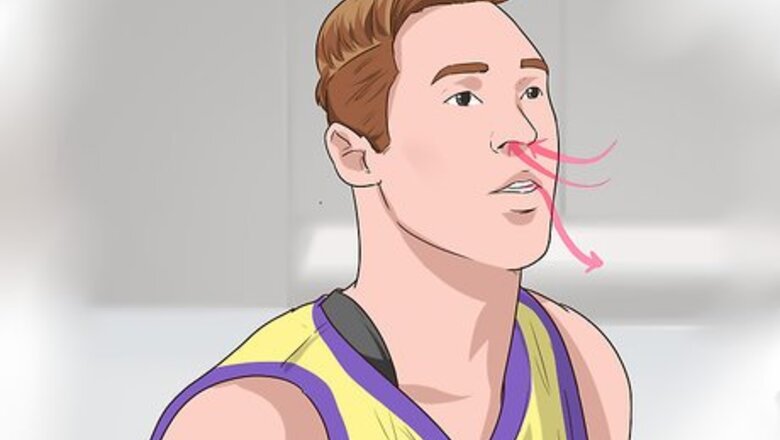
views
Improving Rifle Skills
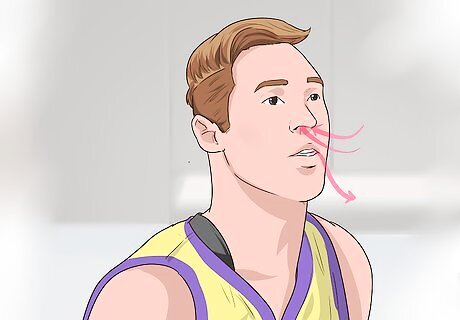
Regulate your breathing. When you breathe, your body and gun move up and down and affect where your shot lands. To minimize these effects, use your natural respiratory pause to steady yourself when you fire your shot. Do this by inhaling and exhaling, then holding your breath while you pull the trigger. The less forced it feels, the more natural shooting your rifle will feel. Don't hold your breath for too long or your sight picture may begin to blur. The sight picture is what you see when looking through your guns front and rear sights. When firing multiple shots in quick succession, take shorter breaths so you can utilize your natural respiratory pause every time you fire the gun. During the pause your respiratory muscles are more relaxed which makes it easy to stay on target.

Master the prone position. The prone position is when the shooter is laying on his stomach while aiming his shot. This position is the most natural and accurate shooting position to learn if you're firing a rifle. Other stances are not as effective. This includes firing while you are standing, which is the hardest way to shoot a rifle and is inaccurate across long distances. If you are trying to improve your long range accuracy, master shooting in the prone position before moving on to harder shooting positions. Other positions including sitting or kneeling. Do not stand up with your rifle. Put the gun on the ground, stand up, then pick it up while you are standing.
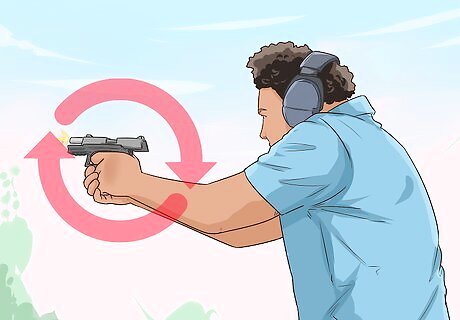
Follow through when you pull the trigger. Follow through entails keeping your gun still while the bullet exits the barrel. To improve your follow through, keep your eye on the target for the entire duration of the shot. Don't move your head after you pull the trigger, and keep the pressure on the trigger even after you've fired. Allowing your finger to bounce forward can affect the gun's natural point of aim. Do not keep the trigger pulled if you are using a fully automatic rifle. By developing good follow through, you'll be able to spot where your shots landed, and how to adjust your aim for the next shot.
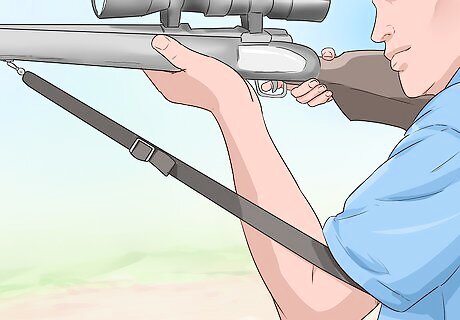
Use a sling when you're shooting. Shooting slings can help you keep your gun close to your shoulder and in the right position, especially if you don't have a bipod to keep your rifle steady. Shooting slings can act as carrying straps, but double as gun to shoulder support. To alter your sling to act as a shooting sling, detach the sling from the rear of the rifle, and create a loop at the end of the sling. This loop will anchor to your supporting arm and help you steady your aim. This will help keep your rifle steady as you take your shot.
Improving Handgun Skills
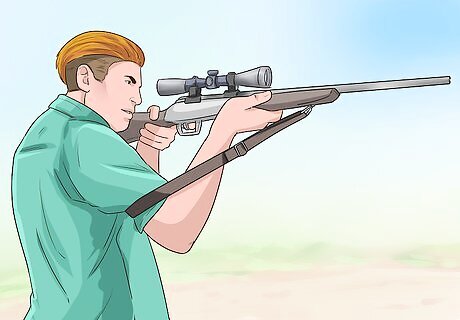
Hold the gun firmly with the proper grip. For the proper grip, your dominant hand should rest high on the backstrap of the gun. Your other hand should cover the bottom portion of the gun in the space that your dominant hand is not covering and your thumb on your strong hand should be right over your non-dominant thumb. Both thumbs should be pointing towards your target. Rest your trigger finger on the side of the trigger guard until you are ready to shoot. Do not hold the top of the gun or the slide lock as it can cause serious injuries to your hands. Holding your gun with the correct grip will help you minimize the effects of recoil.
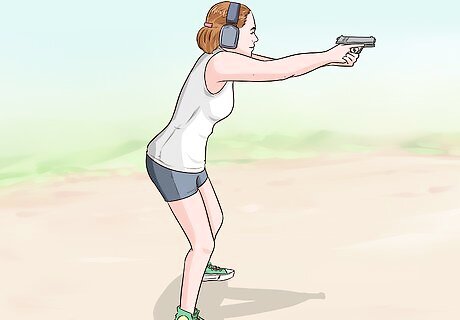
Use the correct stance. Stand with your dominant foot behind your non-dominant foot, a hip length apart from one another. Bend your torso forward slightly, and balance on the balls of your feet to counteract the kickback that's generated from the pistol. Do not bend backward. Your shoulders should be in front of your hips.
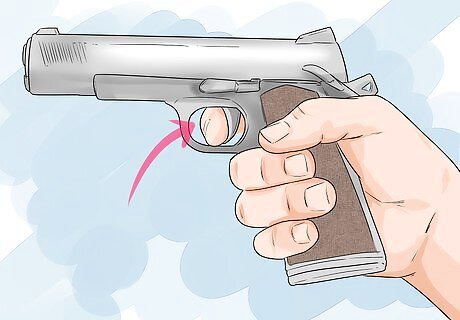
Develop better trigger control. The pad of your index finger should be in the direct center of the trigger of the gun. When firing, steadily press your finger in a rearward motion. There should be a level of slack on the trigger before you reach resistance. Once your shot is fired, allow the trigger to move forward again and reset before taking your next shot. The pressure should come from your trigger finger only. Do not pull the trigger by tightening the grip on your hand.
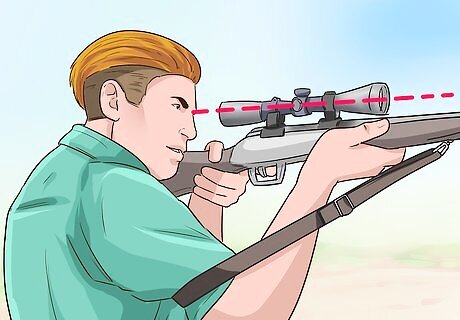
Verify that you have proper sight alignment. The front and back of your sights should align on the top, and vertically. When aligned correctly, there should be equal distance between the front sight and either side of the rear sights. Proper sight alignment is necessary for your shots to be accurate. If your close range shots are accurate but at long range veer to one side, there's a good chance you'll need to readjust your sight alignment.
Practicing at the Range
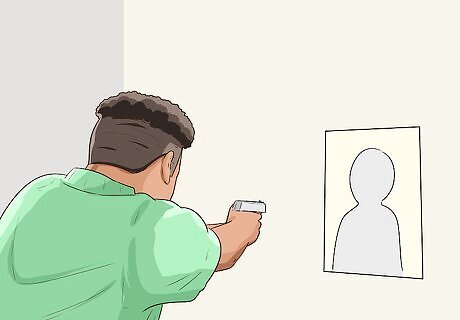
Practice dry firing your gun. Dry firing your gun is a good practice technique that saves money on purchasing training ammunition. Before practicing with dry ammunition, make sure you pick a safe location and double check that your gun is unloaded. Practice aiming and firing into a spot on the wall. Take into account your grip and your stance. Standing in a mirror may help you. Dry firing is also beneficial because it takes away other distractions like the sound of your gun or the recoil that occurs when firing live rounds. You can also use dummy rounds when dry firing, which are plastic rounds that allow the gun's slide to move forward.

Practice regularly. Like many other skills, repeating the action of firing your gun will help you build muscle memory and will make shooting your gun feel more instinctual than procedural. Go to the range as often as you can and practice dry firing on your off time or if you don't have the money for live ammunition. Having muscle memory will also help you in self-defense or live fire situations.

Keep safe at all times. Keeping safe means keeping your gun unloaded and finger off the trigger until you're ready to fire it. Check that there are no bullets in the magazine or the chamber. Never point your gun towards something that you don't want to shoot. When your gun is idle, make sure that it's pointed down range. Wear protective headphones and eyewear as well. All ranges have different rules. Ask a staff person for a copy of the rules. Remove the magazine from the gun until you're ready to fire. If you're using a revolver, make sure that the cylinder is bullet free. Never go past the firing line unless a staff member ceases all fire on the range.
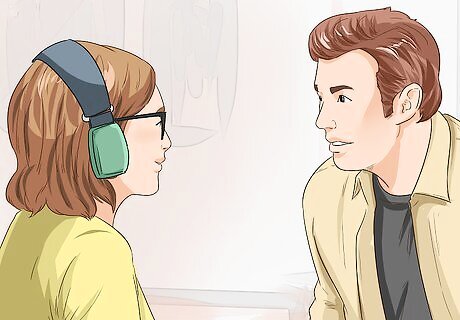
Get an instructor at a range to help you. An instructor will be able to assist you with your form. If you're not sure why your shots are missing your target, ask them to evaluate your shooting and they can help you adjust. Always listen to the instructor and pay close attention to the steps that they provide. Look online for firing ranges in your area. Ask the front desk at the range for an instructor who can help you improve.
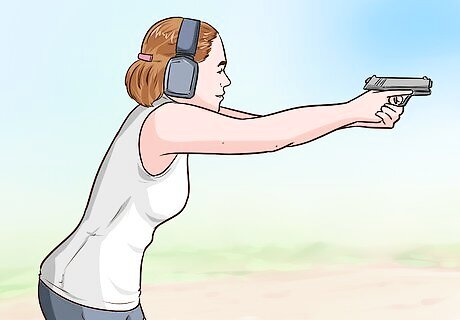
Master your natural point of aim. The natural point of aim is the natural position of the gun and your body, while you are behind it. To find your natural point of aim, center yourself on a target that you want to shoot. Draw your gun, and set the gun sights on the center of the target. Close your eyes and swing your gun 45 degrees back and forth by rotating your hips three times. Come back to the center of the target and open your eyes. This is your natural point of aim. If you are left or right of your target, make sure to adjust your feet so that you are centered on the target. The tip of the front sight post will designate the natural point of aim. Always make sure that your gun is unloaded when testing your natural point of aim.


















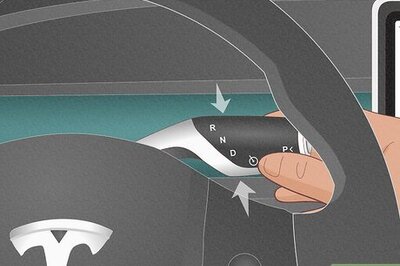
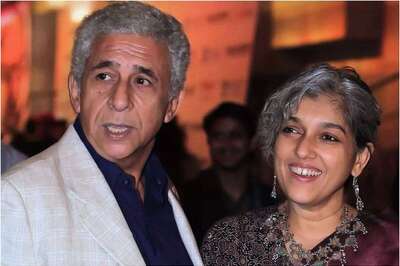
Comments
0 comment